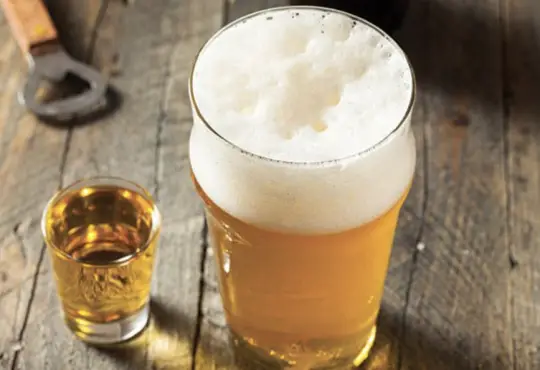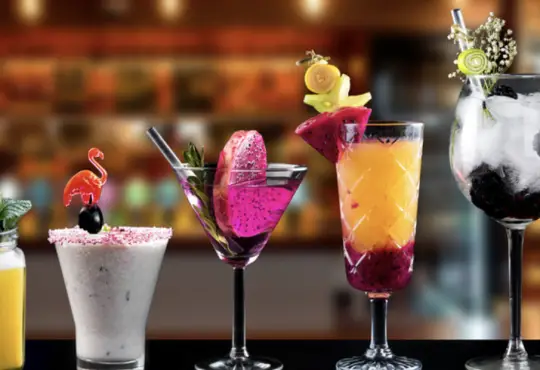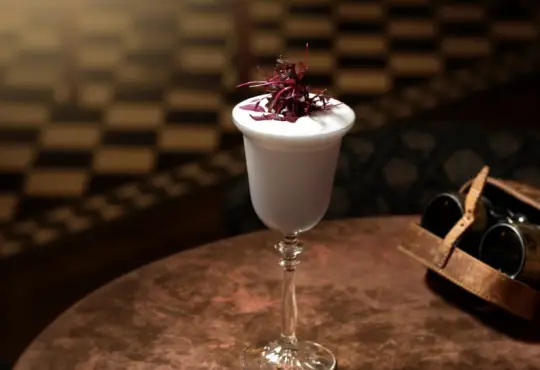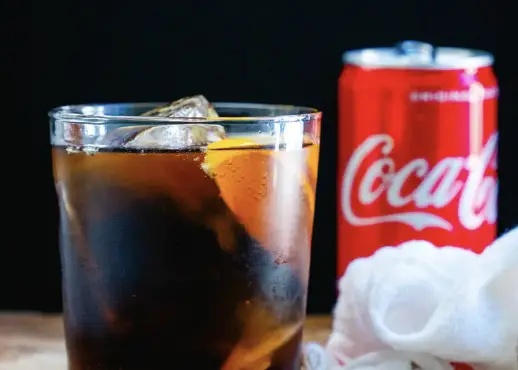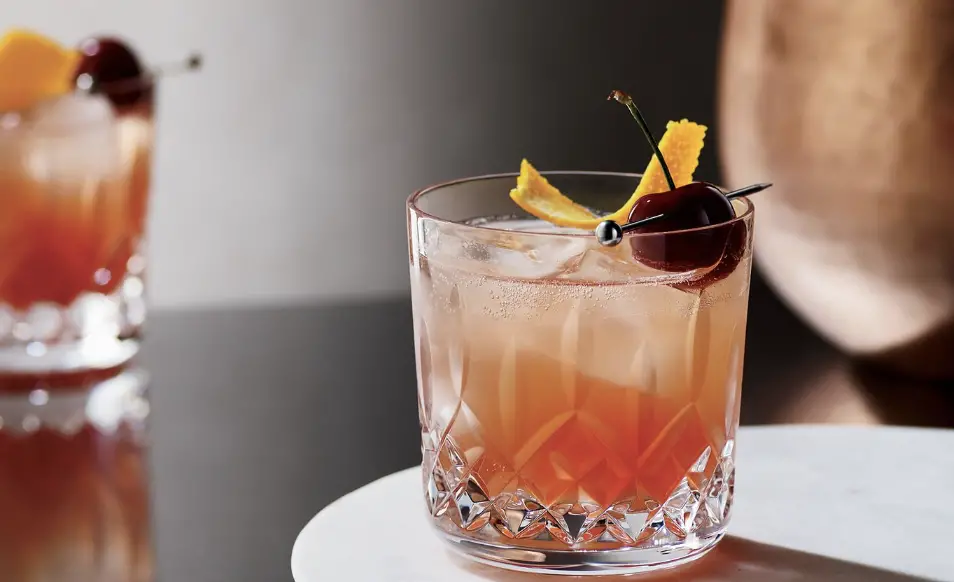
Unraveling the Mysteries: Answering Your Burning Bourbon Cocktail Questions
Are you a bourbon enthusiast or an aspiring mixologist looking to delve into the world of bourbon cocktails? With their rich flavors, timeless appeal, and endless possibilities, bourbon cocktails have captivated the hearts and taste buds of many. But as you embark on your mixological journey, it’s natural to have questions. Fear not, for we are here to unravel the mysteries and provide answers to your burning bourbon cocktail inquiries. In this comprehensive blog post, we’ll address the most common questions, offer insights, and equip you with the knowledge to craft exceptional bourbon libations. So, let’s raise our glasses and dive into the fascinating realm of bourbon cocktails, one question at a time. Cheers to quenching your thirst for knowledge and flavor!
What is the best bourbon to use in cocktails?
The best bourbon to use in cocktails ultimately depends on personal preference and the specific flavor profile you’re aiming to achieve in your drink. However, there are a few key factors to consider when selecting a bourbon for cocktails:
- Flavor Profile: Look for bourbons that offer a well-balanced flavor profile that complements the other ingredients in your cocktail. Some prefer a bourbon with rich caramel and vanilla notes, while others may prefer a spicier or smokier profile. Experiment with different brands and expressions to find the flavor profile that appeals to you.
- Proof: The alcohol content, or proof, of the bourbon can impact the overall flavor and potency of your cocktail. Higher proof bourbons can add a robust and intense flavor, while lower proof options may offer a smoother and more mellow experience. Consider the desired strength and intensity of your cocktail when choosing a bourbon.
- Price Point: Budget is also an important factor to consider. There are excellent bourbons available at various price ranges, so you don’t have to break the bank to create delicious cocktails. It’s always worth exploring different options within your budget to find a bourbon that suits your taste and wallet.
- Versatility: Look for bourbons that can work well in a wide range of cocktail styles. Versatile bourbons can be used in classic cocktails like the Old Fashioned or the Manhattan, as well as in more modern and creative concoctions.
Some popular bourbon brands that are often recommended for cocktails include:
- Buffalo Trace
- Four Roses
- Maker’s Mark
- Woodford Reserve
- Elijah Craig
- Bulleit Bourbon
- Wild Turkey
Ultimately, the “best” bourbon for your cocktails is a matter of personal preference. Don’t be afraid to explore and experiment with different brands and expressions to find the one that resonates with your taste buds and elevates your cocktail creations. Cheers to your bourbon cocktail adventures!
Can I substitute bourbon with another type of whiskey in a cocktail?
Yes, you can often substitute bourbon with another type of whiskey in a cocktail, depending on the desired flavor profile and characteristics you’re aiming for. While bourbon has its own distinct qualities, other types of whiskey can bring their own unique flavors to a cocktail, adding a new twist to the drink. Here are a few common whiskey substitutions:
- Rye Whiskey: Rye whiskey is a popular choice for bourbon substitutions, especially in classic cocktails like the Manhattan. Rye whiskey has a spicier and drier flavor profile compared to bourbon, which can add complexity and a peppery kick to your drink.
- Tennessee Whiskey: Tennessee whiskey, like bourbon, is primarily made from corn and undergoes a charcoal filtering process known as the Lincoln County Process. It shares some similarities with bourbon in terms of flavor but often has a slightly sweeter and smoother profile. This makes it a viable alternative in bourbon-based cocktails.
- Irish Whiskey: Irish whiskey has a lighter and smoother character compared to bourbon. It can work well in cocktails where you want a more subtle whiskey presence without overpowering other flavors. However, do keep in mind that Irish whiskey has its own unique flavor profile, so the resulting cocktail may have a different taste compared to using bourbon.
- Scotch Whisky: Scotch whisky brings its own distinct smoky and peaty flavors to the table. While it’s not a traditional substitute for bourbon in classic bourbon cocktails, it can be an interesting choice in experimental or smoky variations. It’s essential to consider the overall flavor profile and whether the smoky notes of Scotch will complement or overpower the other ingredients in the cocktail.
Remember, when substituting whiskey in a cocktail recipe, it’s important to consider the specific flavors and characteristics of the whiskey you’re using, and how they will interact with the other ingredients.
What are some classic bourbon cocktails that I should try?
When it comes to classic bourbon cocktails, there are a few iconic recipes that have stood the test of time. These beloved libations showcase the versatility and depth of flavor that bourbon brings to the glass. Here are some classic bourbon cocktails you should definitely try:
- Old Fashioned: This timeless cocktail is a true bourbon classic. It combines bourbon, sugar, Angostura bitters, and a twist of citrus peel. The simplicity of the ingredients allows the rich and complex flavors of the bourbon to shine.
- Mint Julep: Synonymous with the Kentucky Derby, the Mint Julep is a refreshing and aromatic bourbon cocktail. It features muddled mint leaves, simple syrup, crushed ice, and bourbon, all elegantly served in a silver cup. Sip on this summertime delight and transport yourself to the Southern charm of the Kentucky Derby.
- Manhattan: A cocktail with New York City origins, the Manhattan is a sophisticated blend of bourbon (or rye whiskey), sweet vermouth, and aromatic bitters. Garnished with a Luxardo cherry, this classic cocktail offers a harmonious balance of sweetness and complexity.
- Whiskey Sour: While traditionally made with whiskey, the Whiskey Sour is equally delightful with bourbon. It combines bourbon, fresh lemon juice, and simple syrup, creating a tart and tangy cocktail with a hint of sweetness. Don’t forget to top it off with a maraschino cherry.
- Boulevardier: A close relative of the Negroni, the Boulevardier swaps gin for bourbon, resulting in a cocktail with a richer and more robust flavor profile. This equal-parts combination of bourbon, sweet vermouth, and Campari creates a sophisticated and bittersweet experience.
- Sazerac: Hailing from New Orleans, the Sazerac is a classic cocktail that celebrates the heritage of American whiskey. This complex concoction features rye whiskey (though bourbon can be used), absinthe or Herbsaint, sugar, and Peychaud’s bitters. It’s a drink that carries history in every sip.
- Whiskey Smash: The Whiskey Smash is a delightful bourbon cocktail that muddles fresh mint leaves, lemon wedges, and simple syrup. Combined with bourbon and shaken with ice, it offers a bright and herbaceous flavor profile that’s perfect for a refreshing sip.
These classic bourbon cocktails have been enjoyed for generations and continue to be favorites among cocktail enthusiasts. Each one presents a unique combination of flavors that showcases the versatility of bourbon as a base spirit.
How do I properly muddle ingredients in a bourbon cocktail?
Properly muddling ingredients in a bourbon cocktail is essential for extracting flavors and releasing aromatic oils from herbs, fruits, or other ingredients. Here’s a step-by-step guide to help you master the art of muddling:
- Choose the right muddler: Use a sturdy muddler made of wood, stainless steel, or another durable material. Avoid using a plastic muddler, as it may not be as effective in extracting flavors.
- Prepare the ingredients: Gather the ingredients you need for muddling, such as herbs (e.g., mint), fruits (e.g., citrus wedges), or sugar cubes. Ensure the ingredients are fresh and of good quality.
- Place the ingredients in the mixing vessel: Add the ingredients you want to muddle into the bottom of your mixing vessel or cocktail shaker. This is usually done before adding the other cocktail components, such as ice or spirits.
- Apply gentle pressure: Hold the muddler in your dominant hand and place it on top of the ingredients. Apply gentle, even pressure and start muddling. Avoid using excessive force, as it can over-muddle and create a bitter taste.
- Use a twisting motion: With a firm grip on the muddler, use a gentle twisting motion as you press down on the ingredients. This helps to release the flavors and aromas without crushing them excessively.
- Be mindful of the duration: Muddle the ingredients for about 10-15 seconds or until you achieve the desired level of extraction. Remember, the goal is to release the flavors without creating a mushy mess.
- Avoid over-muddling: It’s crucial not to over-muddle, especially when working with delicate ingredients like herbs. Over-muddling can extract bitter compounds and result in an unbalanced cocktail.
- Strain or mix: After muddling, proceed with adding the remaining ingredients to your cocktail. If using a cocktail shaker, add ice and other components, then shake well. If not using a shaker, simply add the remaining ingredients and stir.
- Fine-straining (optional): If your cocktail recipe calls for fine-straining, use a fine-mesh strainer to remove any small particles or sediment from the muddled ingredients before serving.
Remember, muddling is a technique that requires a gentle touch and some practice. With time, you’ll develop a sense of how much pressure and duration are needed to extract the desired flavors.
Should bourbon cocktails be stirred or shaken?
Whether a bourbon cocktail should be stirred or shaken depends on the specific recipe and desired outcome. Here’s a general guideline to help you decide:
- Stirring: Stirring is the preferred method for cocktails that consist solely of spirits (such as the classic Old Fashioned or Manhattan) or when you want to create a smooth and silky texture. Stirring gently chills the cocktail without introducing excessive air or dilution. To stir a bourbon cocktail, use a long-handled bar spoon and stir it in a mixing glass or sturdy container filled with ice for about 20-30 seconds. Strain and serve.
- Shaking: Shaking is recommended for cocktails that contain ingredients like fruit juices, syrups, or egg whites. Shaking helps incorporate these ingredients thoroughly, adds aeration, and provides a more lively texture. However, shaking can also result in more dilution compared to stirring. To shake a bourbon cocktail, add the ingredients to a cocktail shaker filled with ice, seal it tightly, and shake vigorously for about 10-15 seconds. Strain and serve.
- Exceptions: There are some bourbon cocktails that can be either stirred or shaken, depending on personal preference. For example, the Whiskey Sour can be shaken for a frothy texture or stirred for a smoother mouthfeel. Similarly, the Boulevardier can be enjoyed stirred or shaken, allowing you to experiment with different textures and presentations.
In the end, the decision to stir or shake a bourbon cocktail depends on the ingredients, desired texture, and personal preference.
How do I balance the sweetness and flavors in a bourbon cocktail?
Balancing the sweetness and flavors in a bourbon cocktail is crucial for creating a well-rounded and harmonious drink. Here are some tips to help you achieve the desired balance:
- Start with a solid recipe: Begin with a trusted recipe that has been carefully crafted and tested. This provides a solid foundation for understanding the intended flavor profile and proportions.
- Use fresh and quality ingredients: Opt for high-quality bourbon and fresh ingredients like citrus juices, syrups, and bitters. Fresh ingredients will have more vibrant flavors, contributing to a better balance in the cocktail.
- Consider the sweetness of the bourbon: Different bourbon brands and expressions vary in sweetness levels. Take this into account when selecting your bourbon for the cocktail. Sweeter bourbons may require adjustments to the other sweet components in the recipe.
- Employ the concept of balancing flavors: Balancing sweetness is not just about adjusting sugar content but also about considering other flavor elements. Keep in mind the concepts of acidity, bitterness, and aromatics to create a complex and well-rounded flavor profile.
- Experiment with bitters and citrus: Bitters can add depth and complexity to a bourbon cocktail while helping to balance sweetness. Citrus juices, such as lemon or lime, provide acidity and brightness. Adjusting the ratios of bitters and citrus can help counterbalance the sweetness of the bourbon.
- Gradual adjustments: Start with the recommended proportions in the recipe and taste the cocktail. If it’s too sweet, slowly reduce the amount of sweetening agents like syrups or adjust the citrus and bitters. Conversely, if the cocktail is too tart or bitter, you can add a touch of sweetness to balance it out.
- Taste as you go: Throughout the mixing process, taste the cocktail regularly. This allows you to make incremental adjustments and find the optimal balance. Remember that personal preference plays a role, so adjust the sweetness and flavors to suit your taste.
- Keep notes: Record your adjustments and observations in a cocktail journal. This way, you can refer back to your experiments and refine your techniques over time.
Remember, achieving the perfect balance in a bourbon cocktail may require some experimentation and fine-tuning. Don’t be afraid to adjust the ratios of ingredients, add or subtract components, and rely on your taste buds to guide you.
Are there any specific glassware recommendations for serving bourbon cocktails?
When it comes to serving bourbon cocktails, selecting the right glassware can enhance the drinking experience and showcase the beauty of the cocktail. Here are some glassware recommendations to consider:
- Old Fashioned Glass (or Rocks Glass): This short and stout glass with a thick bottom is the classic choice for serving bourbon cocktails like the Old Fashioned, Manhattan, or Boulevardier. Its wide opening allows for the aroma of the bourbon to be appreciated, and its sturdy design is perfect for muddling ingredients or adding ice.
- Collins Glass: A Collins glass, also known as a highball glass, is tall and slender with straight sides. It’s an ideal choice for bourbon cocktails that require a larger volume, such as the Mint Julep or Whiskey Sour with extra ice and mixers. The elongated shape showcases the layers of the drink and allows for the addition of garnishes like citrus wheels or mint sprigs.
- Glencairn Glass: While traditionally used for whiskey tastings, Glencairn glasses can also be a great option for savoring the complexities of bourbon cocktails. Their tulip-shaped design concentrates the aromas, making it easier to appreciate the nuances of the bourbon and other ingredients.
- Coupe Glass: For elegant and sophisticated bourbon cocktails like the Boulevardier or Sazerac, a coupe glass adds a touch of vintage charm. Its shallow, broad bowl allows the aromas to concentrate and creates an aesthetically pleasing presentation.
- Martini Glass: While not typically associated with bourbon cocktails, a martini glass can be a stylish choice for certain bourbon-based drinks like the Bourbon Sour or variations of the Manhattan. The elongated stem and wide, triangular bowl provide an elegant look and allow for the appreciation of the drink’s color and aromas.
Remember, glassware selection is not solely about aesthetics; it can also influence the temperature, aroma, and overall experience of enjoying a bourbon cocktail.
What are some beginner-friendly bourbon cocktails for those new to the spirit?
For those new to bourbon, it’s great to start with cocktails that are approachable, well-balanced, and highlight the flavors of the spirit without overwhelming the palate. Here are some beginner-friendly bourbon cocktails to try:
- Bourbon Smash: This refreshing cocktail is a simple yet delightful choice. Muddle fresh mint leaves with a touch of simple syrup, add bourbon, and a squeeze of lemon juice. Shake with ice and strain into a glass filled with crushed ice. Garnish with a mint sprig and enjoy the bright and herbaceous flavors.
- Kentucky Mule: A bourbon twist on the classic Moscow Mule, this cocktail is both refreshing and easy to make. Combine bourbon, lime juice, and ginger beer in a glass filled with ice. Stir gently and garnish with a lime wedge. The combination of bourbon’s warmth and the zing of ginger beer creates a pleasant and effervescent drink.
- Whiskey Sour: A timeless classic, the Whiskey Sour is a great introduction to bourbon cocktails. In a shaker, combine bourbon, fresh lemon juice, and simple syrup. Shake vigorously with ice and strain into a rocks glass filled with ice. Optionally, garnish with a cherry or lemon wedge. The balanced blend of sweet, tart, and the smoothness of bourbon makes this a go-to choice.
- Bourbon and Ginger Ale: This two-ingredient cocktail is incredibly easy to make and lets the flavors of bourbon shine. Fill a glass with ice, pour bourbon over it, and top it off with ginger ale. Stir gently and garnish with a lemon or orange twist. The sweetness of ginger ale complements the richness of bourbon, creating a smooth and accessible combination.
- Boulevardier: A close cousin to the Negroni, the Boulevardier is a sophisticated cocktail that introduces bourbon to those who appreciate bitter and complex flavors. Combine bourbon, sweet vermouth, and Campari in a mixing glass with ice. Stir gently and strain into a rocks glass over a large ice cube. Garnish with an orange twist. This cocktail offers a balance of sweet, bitter, and herbal notes.
These cocktails provide a range of flavors and styles, allowing newcomers to bourbon to explore different taste profiles and find their preferences.
Are there any non-alcoholic alternatives or substitutions for bourbon in cocktails?
Yes, there are non-alcoholic alternatives and substitutions that can be used in place of bourbon to create delicious mocktails or alcohol-free versions of bourbon cocktails. Here are some options to consider:
- Non-Alcoholic Bourbon Alternatives: There are several non-alcoholic bourbon substitutes available in the market that mimic the flavors and aromas of bourbon. These products are often made using a blend of botanicals, spices, and other natural ingredients to replicate the complexity of bourbon without the alcohol content. Look for brands like Ritual Zero Proof Whiskey Alternative or Lyre’s American Malt Non-Alcoholic Spirit.
- Alcohol-Free Whiskey Syrups: Whiskey-flavored syrups can add depth and complexity to your mocktails. These syrups are typically made with a combination of flavors that resemble the taste of whiskey or bourbon. They can be used as a one-to-one substitution in cocktail recipes that call for bourbon. Check out brands like Fee Brothers Whiskey Barrel-Aged Cocktail Bitters or Liber & Co. Texas Grapefruit Shrub for whiskey-inspired syrups.
- Spices and Infusions: To mimic the warmth and complexity of bourbon, you can experiment with spices and infusions. For instance, you can infuse apple juice or black tea with spices like cinnamon, cloves, and vanilla to create a flavorful base for your mocktail. This adds depth and complexity reminiscent of bourbon.
- Barrel-Aged Bitters: Barrel-aged bitters can provide the rich, woody flavors found in bourbon. These bitters are typically made by aging botanicals and spices in barrels, resulting in a concentrated flavor profile. Adding a few dashes of barrel-aged bitters to your mocktail can contribute the desired bourbon-like essence.
- Flavor Enhancers: Some cocktail enhancers are designed to mimic the flavors of bourbon. These flavor enhancers are concentrated liquid extracts that can be added to your mocktails to impart a bourbon-like taste. Look for products like Bourbon Extract or Bourbon Flavoring to elevate the flavor profile of your non-alcoholic creations.
Remember, the flavor profiles of non-alcoholic alternatives may not perfectly replicate the complexity of bourbon, but they can still provide interesting and enjoyable mocktail experiences.
Can bourbon cocktails be batched or prepared in advance for parties?
Absolutely! Bourbon cocktails can be batched or prepared in advance, making them a convenient and efficient choice for parties and gatherings. Here are some tips for successfully batching bourbon cocktails:
- Scaling the Recipe: Determine the desired quantity of cocktails you want to prepare and scale the recipe accordingly. Multiply the ingredients by the number of servings you need, ensuring the ratios remain consistent. Keep in mind the capacity of your chosen container or punch bowl.
- Dilution Considerations: Dilution is an important aspect of cocktails, especially when batching. Since the cocktail will be sitting for some time, it’s best to slightly reduce the amount of water or ice used in the recipe to compensate for dilution that may occur. You can add ice cubes to individual glasses when serving, if desired.
- Mixing and Storage: Mix the ingredients together in a large pitcher or container, stirring gently to combine. If the recipe includes carbonated ingredients like soda or sparkling water, it’s best to add those just before serving to retain their fizziness. Once mixed, cover the container tightly and store in the refrigerator until ready to serve.
- Garnishes: Some garnishes, like fresh herbs or delicate citrus peels, are best added individually to each glass upon serving. However, more stable garnishes like fruit slices or large ice cubes can be added to the batched cocktail in advance, allowing the flavors to meld together.
- Serving: When it’s time to serve, give the batched cocktail a gentle stir to ensure the flavors are well-distributed. Provide a ladle or a large spoon for guests to help themselves. You can also set up a self-serve station with glasses, ice, and garnishes, allowing guests to customize their drinks.
- Ice and Chill: To keep the batched cocktail cold without diluting it too quickly, you can have a separate container filled with ice for guests to add to their glasses. You can also place the batched cocktail container in a larger bowl filled with ice to maintain its temperature throughout the event.
Remember to consider the duration of the event and the number of guests when determining the quantity of batched cocktails. It’s always a good idea to have a non-alcoholic option available as well for guests who prefer not to drink alcohol.
How do I choose the right garnish for a bourbon cocktail?
Choosing the right garnish for a bourbon cocktail can enhance its visual appeal, add aromatic elements, and complement the flavors of the drink. Here are some tips to help you select the perfect garnish:
- Consider the Flavor Profile: Think about the flavors and aromas present in your bourbon cocktail. Is it citrusy, herbal, or spicy? Choose a garnish that complements and enhances those characteristics. For example, a lemon twist or orange peel can add a bright citrus note to a bourbon sour, while a sprig of fresh mint complements the herbal qualities of a Mint Julep.
- Visual Appeal: Garnishes can also contribute to the visual presentation of your cocktail. Consider the colors and textures that will create an attractive and enticing drink. For example, a Luxardo cherry or a skewer of bourbon-soaked cherries adds a pop of vibrant red to a bourbon cocktail, while a cinnamon stick adds visual interest and a touch of warmth.
- Harmonize with Ingredients: Take into account the other ingredients used in the cocktail. If you have used certain fruits, herbs, or spices in the drink, selecting a garnish that aligns with those elements can create a cohesive flavor experience. For instance, if your cocktail includes blackberries, adding a blackberry garnish on a cocktail pick can tie everything together.
- Aromatic Enhancements: Garnishes can provide aromatic notes that complement the flavors in the drink. Consider using herbs like mint, rosemary, or basil to release their enticing scents as you bring the glass to your nose. This adds another layer of sensory pleasure to the drinking experience.
- Texture and Practicality: Consider the practicality of the garnish. Some garnishes may be more decorative and delicate, while others can be functional. For instance, a long cinnamon stick can double as a stirrer, and a skewer of bourbon-infused fruit can be a delightful treat at the end of the drink. Choose garnishes that are easy to handle and enhance the overall enjoyment of the cocktail.
- Personal Preference: Ultimately, let your personal taste and creativity guide your choice of garnish. Experiment with different options, and don’t be afraid to try unconventional garnishes to add your unique touch. It’s an opportunity to showcase your style and make the cocktail truly your own.
Remember to be mindful of the proportion of the garnish, ensuring it complements the size of the glass and doesn’t overpower the drink.
Conclusion
In conclusion, we have embarked on a flavorful journey through the world of bourbon cocktails, unraveling the mysteries and answering your burning questions along the way. From the best bourbons to use in cocktails to the art of muddling, stirring vs. shaking, and balancing flavors, we’ve covered it all. We’ve explored the history, basics, and must-try classics, empowering you to become a confident bourbon mixologist.
Remember, the beauty of bourbon cocktails lies in the endless possibilities and personal preferences. Whether you’re a seasoned bourbon aficionado or a curious newcomer, there’s always room to experiment, innovate, and craft your signature libations. With each cocktail, you have the opportunity to create a unique sensory experience, delighting your taste buds and sharing moments of conviviality with friends and loved ones.
So, raise your glass and embark on your bourbon cocktail adventure. Explore the depths of flavor, unlock new combinations, and savor the rich heritage of this beloved spirit. Cheers to mastering the art of bourbon cocktails and crafting unforgettable moments filled with laughter, camaraderie, and the enticing allure of bourbon’s warm embrace. May your shakers clink, your glasses overflow, and your journey into the world of bourbon cocktails be nothing short of extraordinary.

